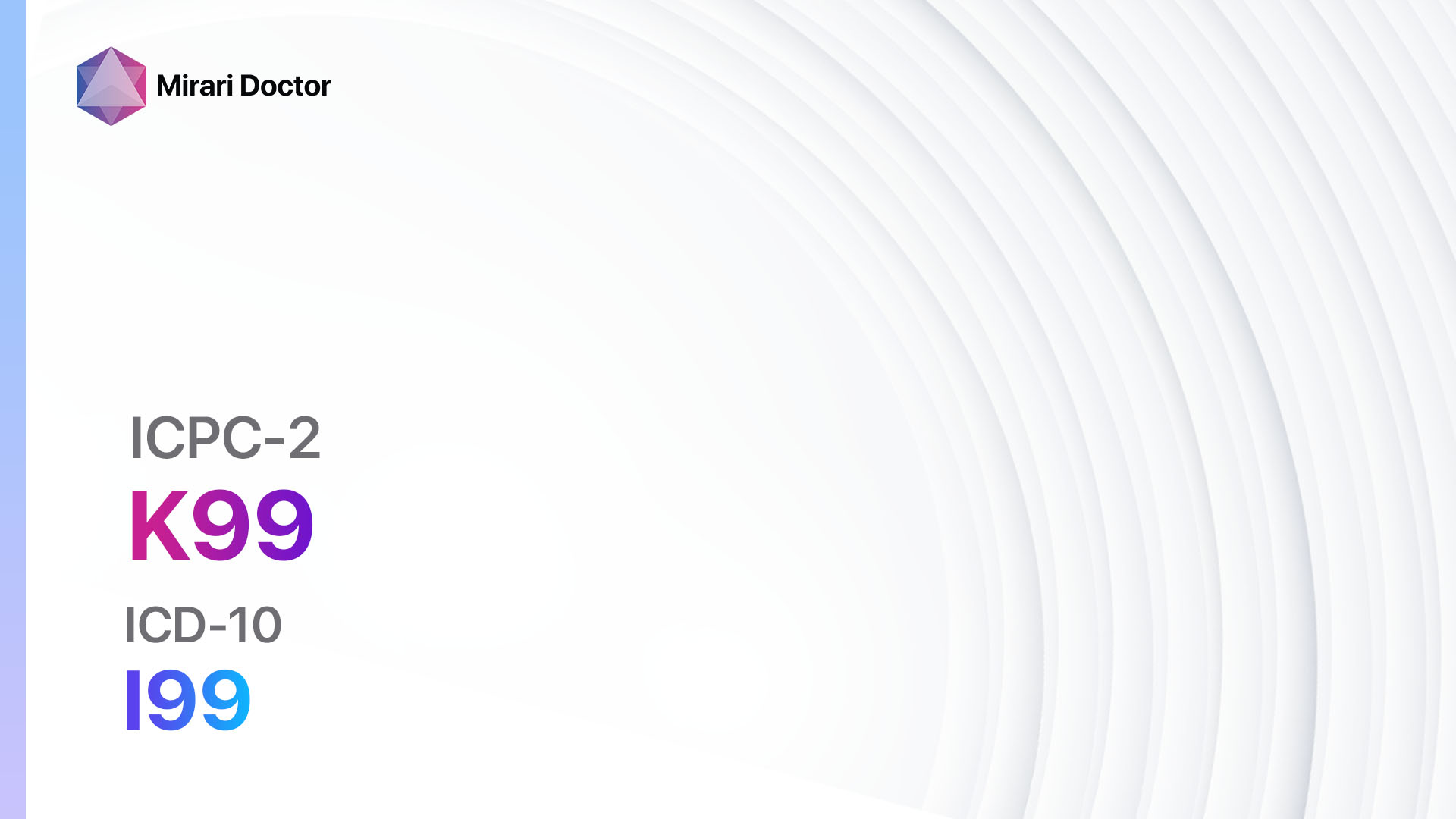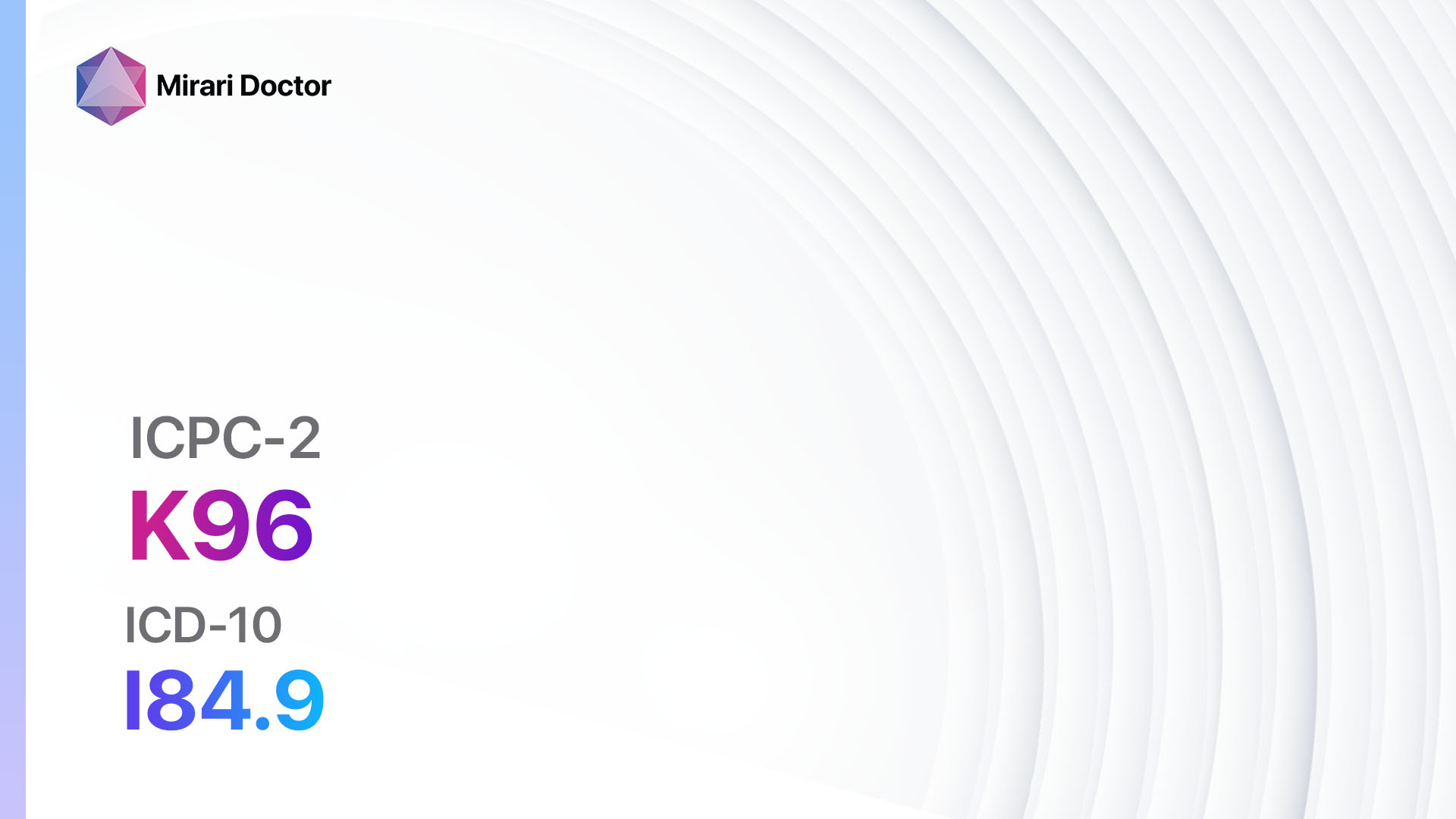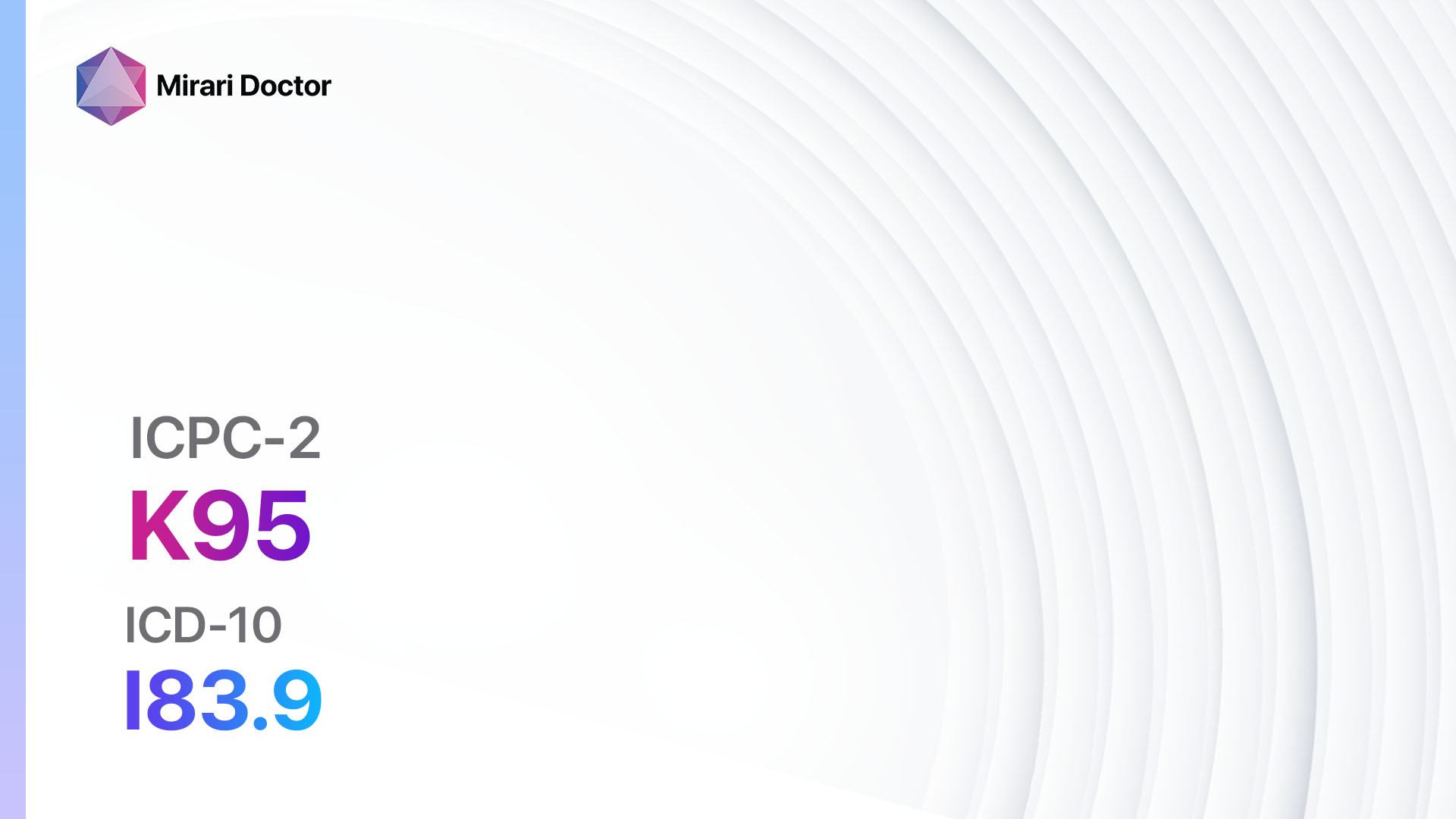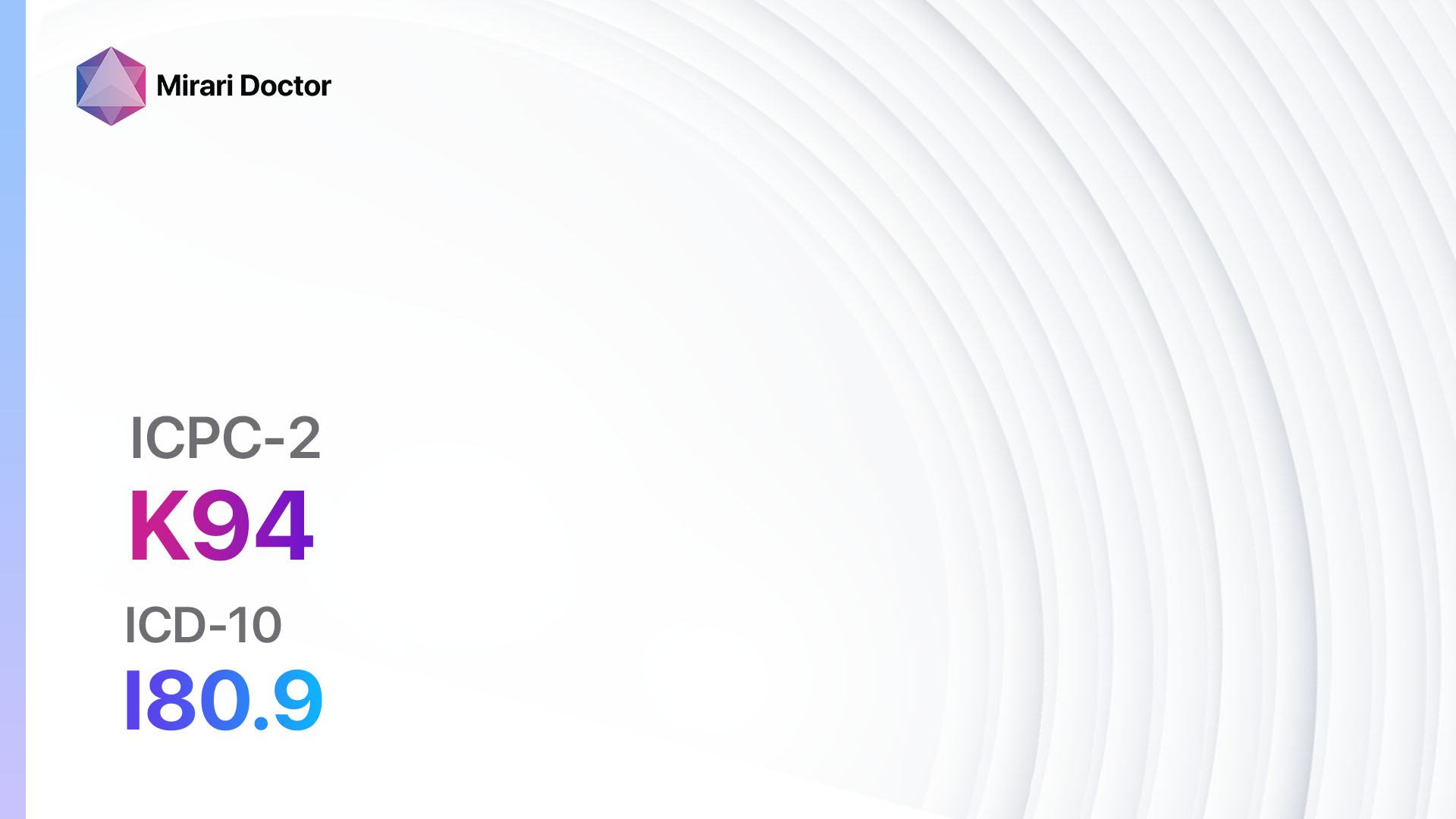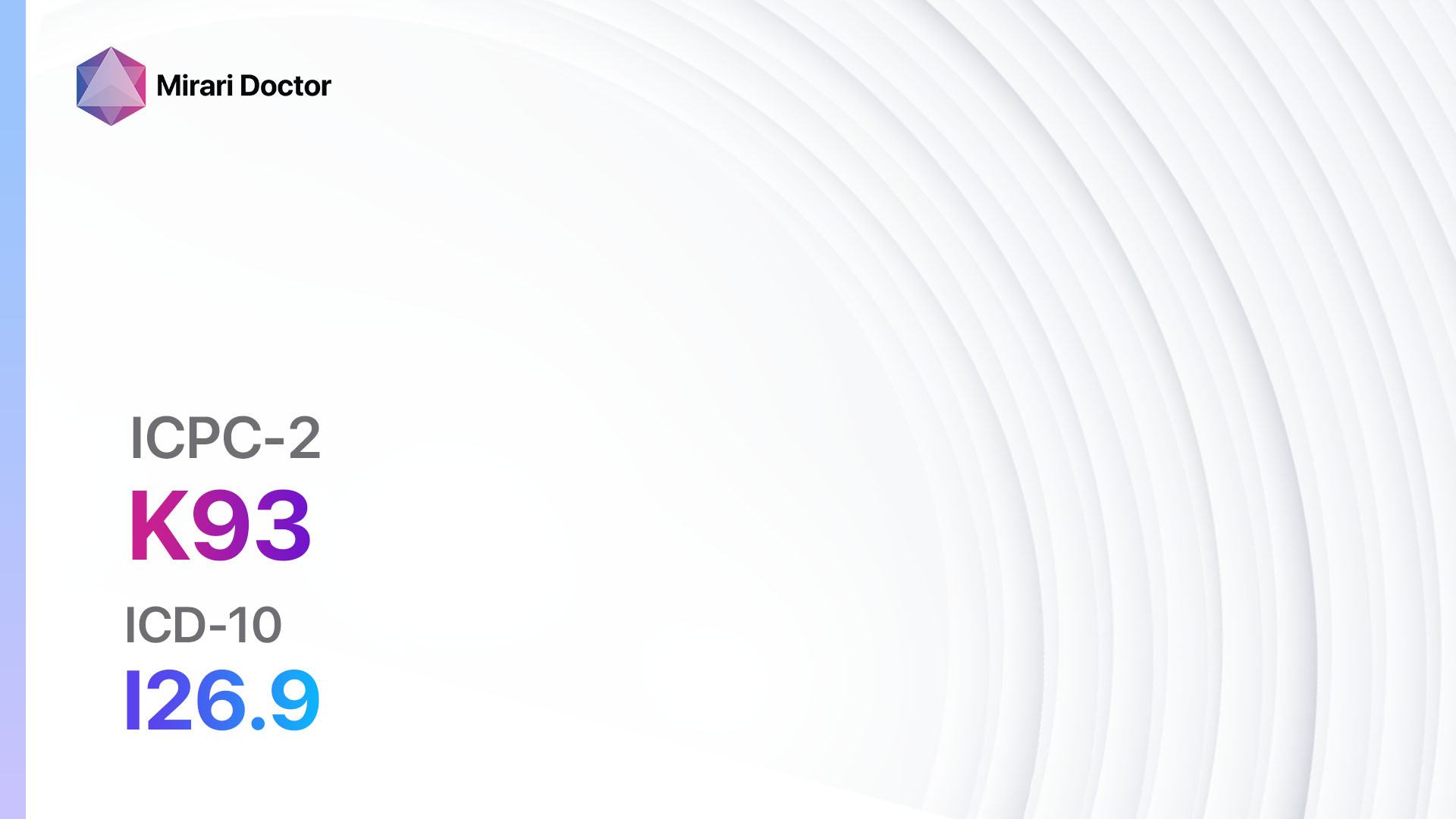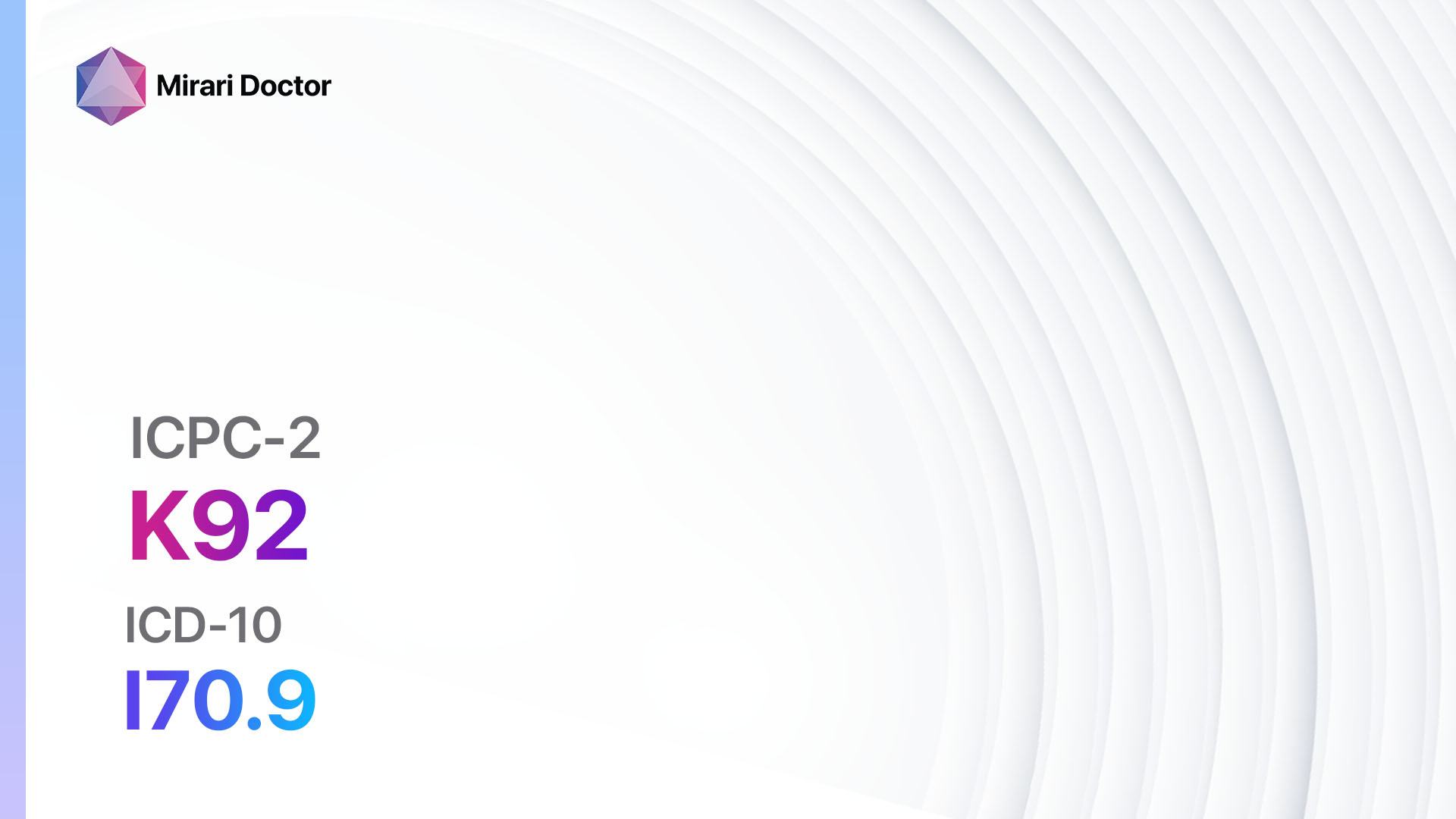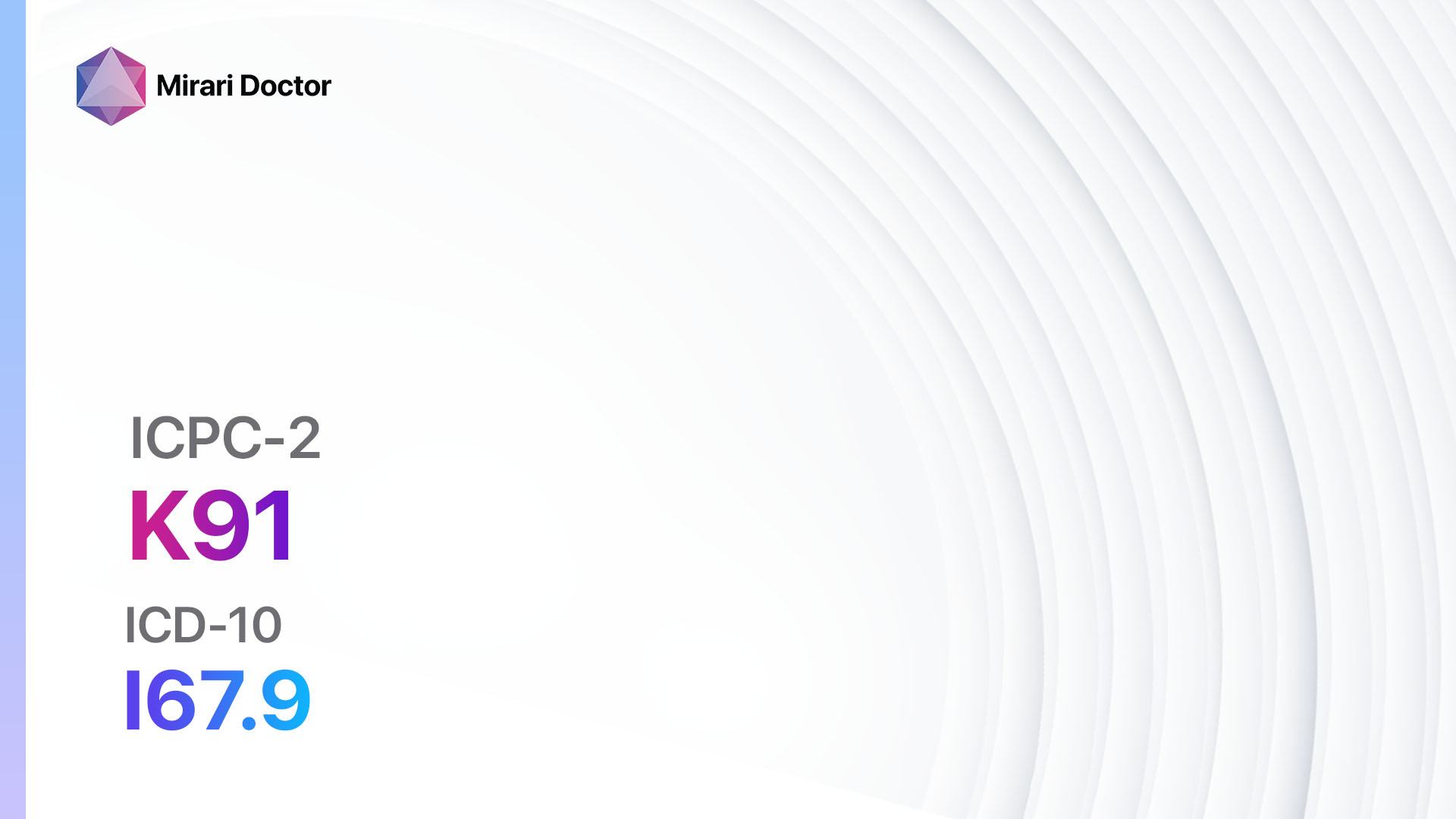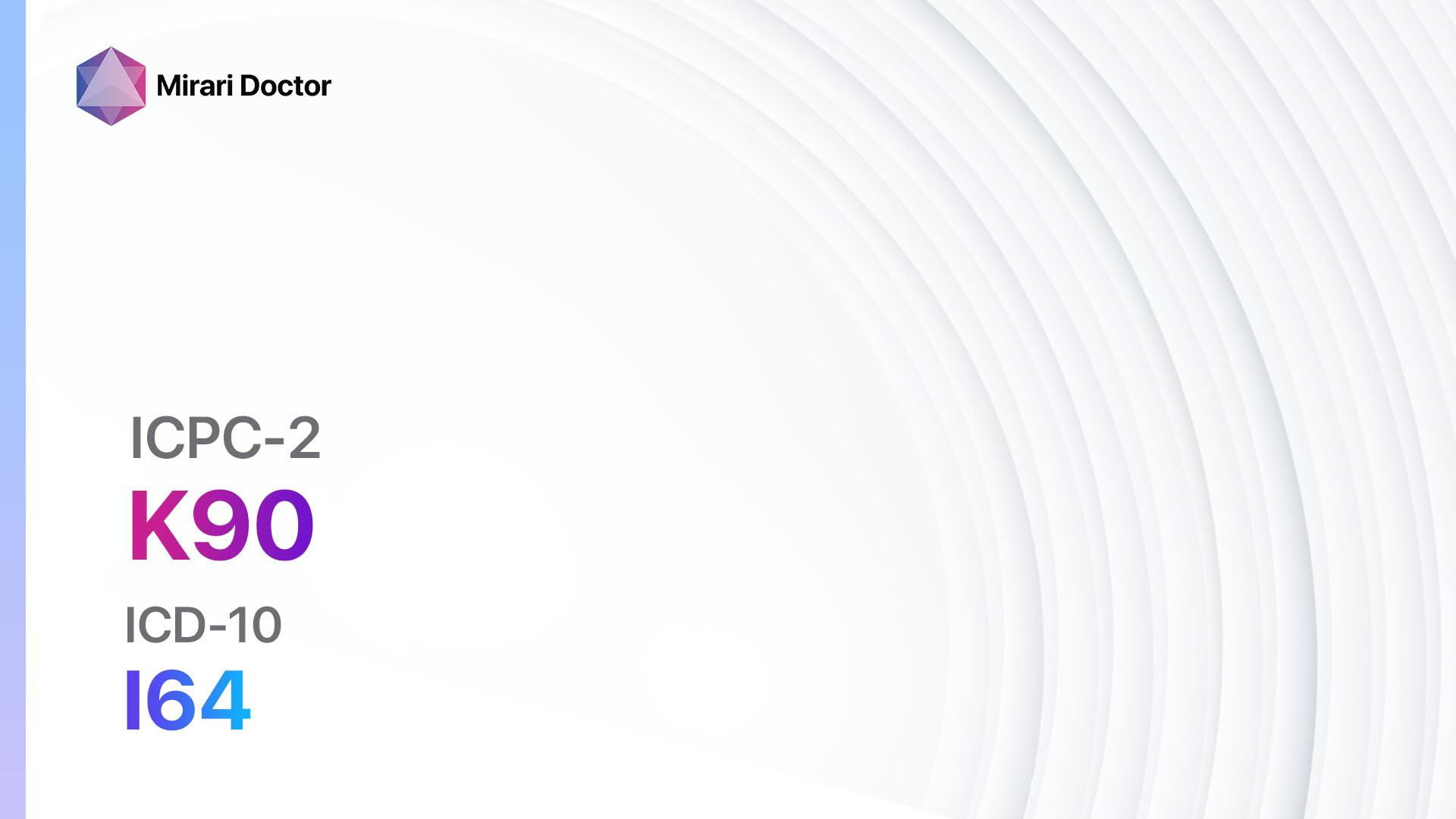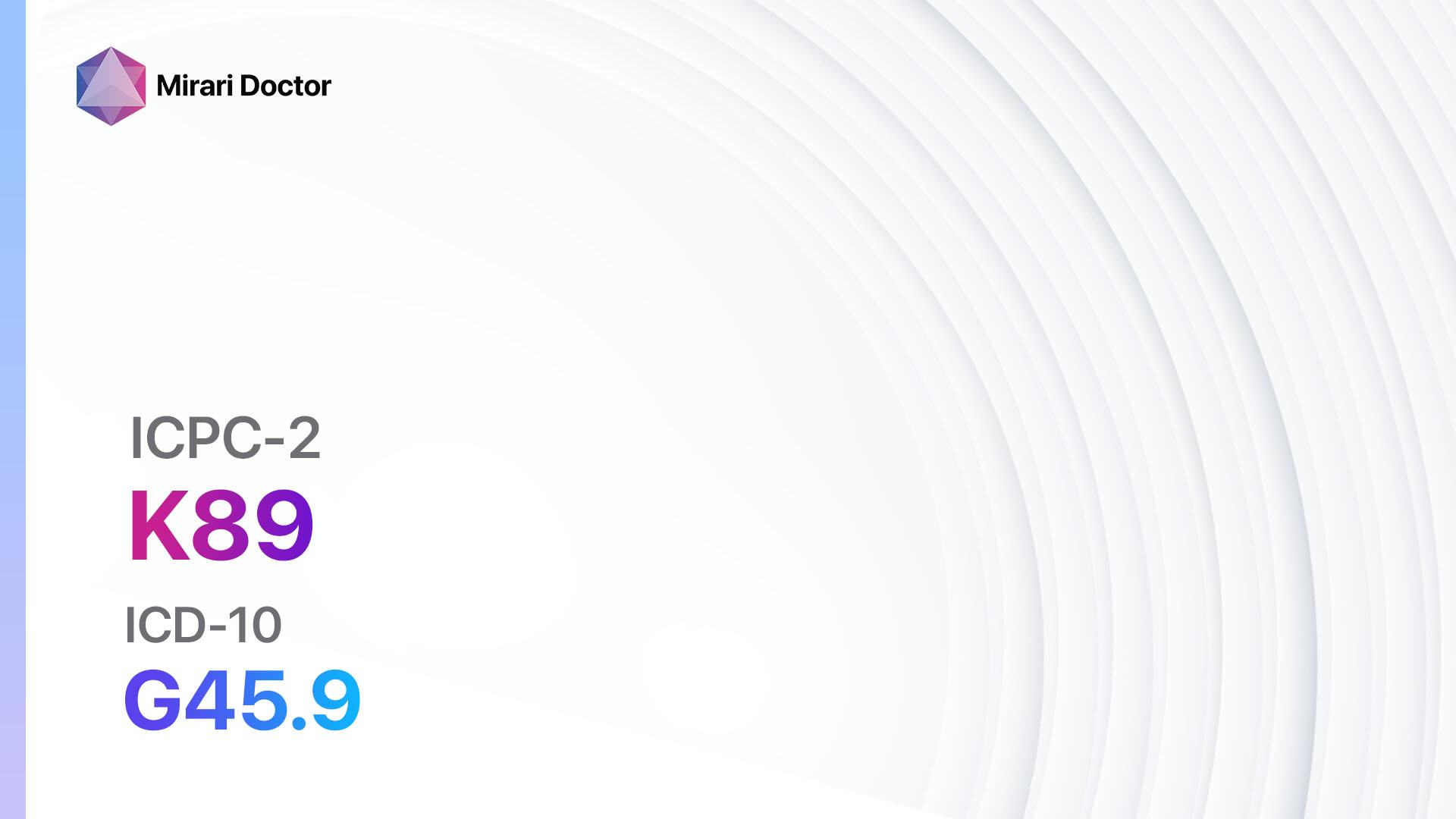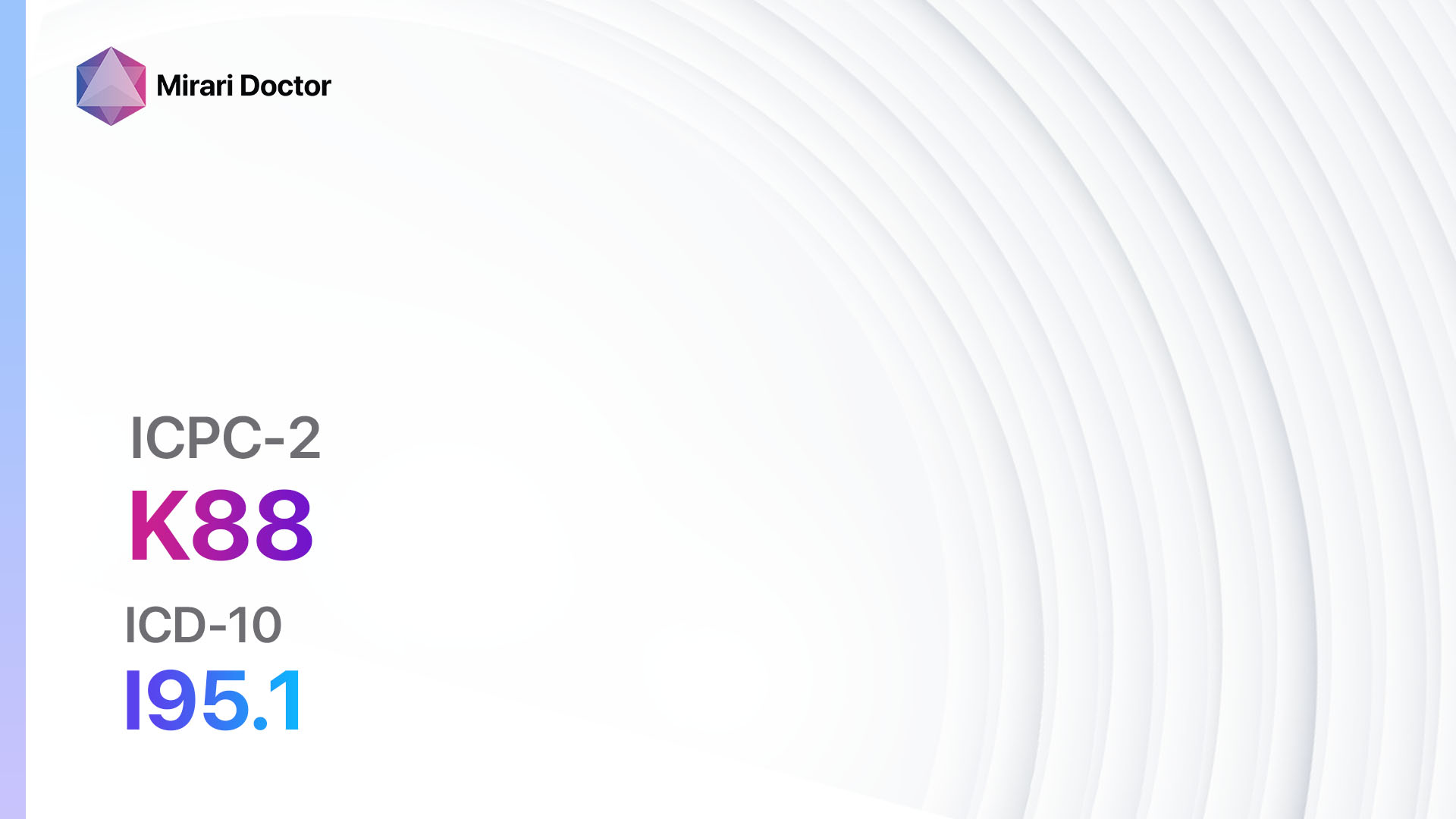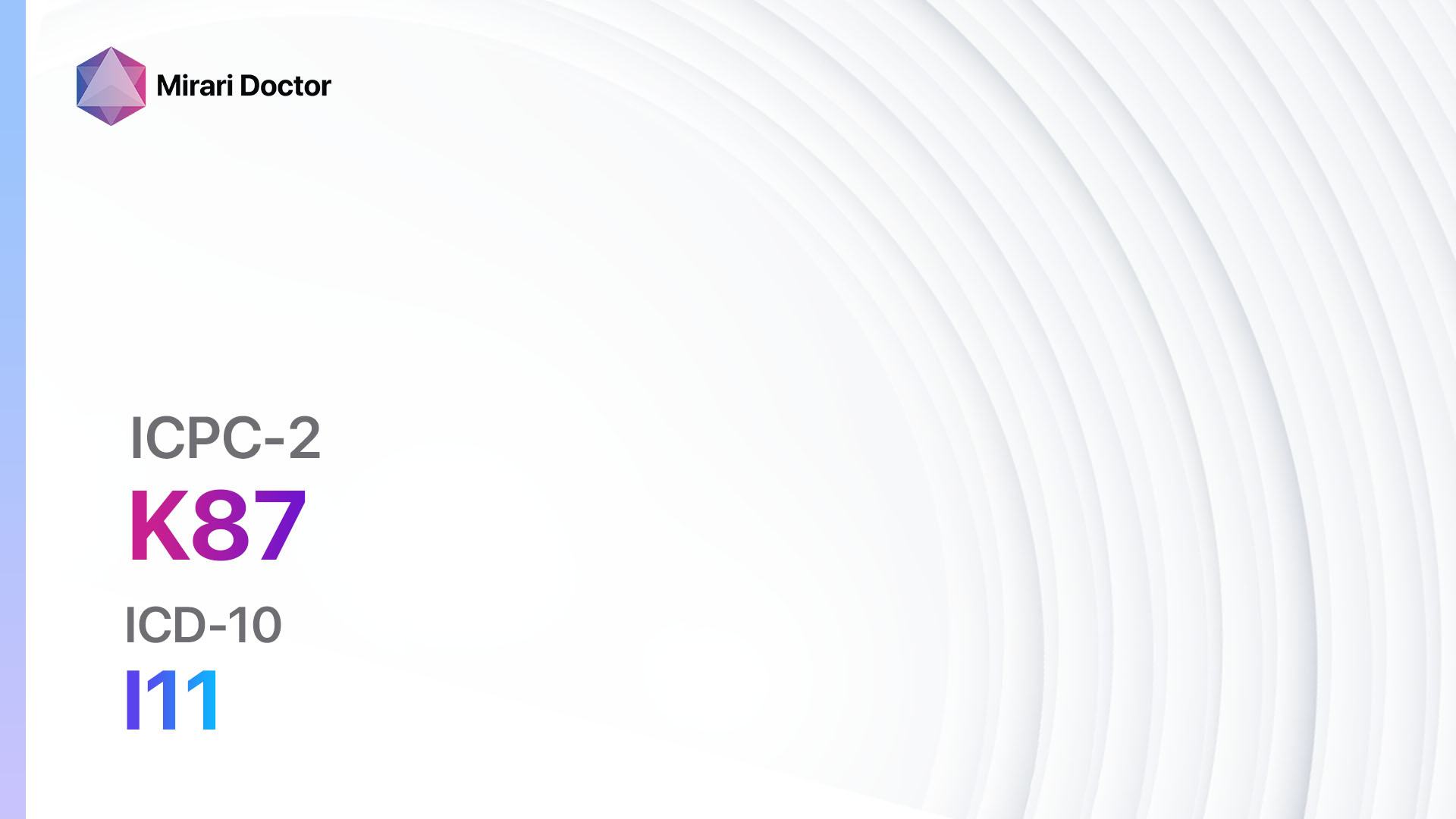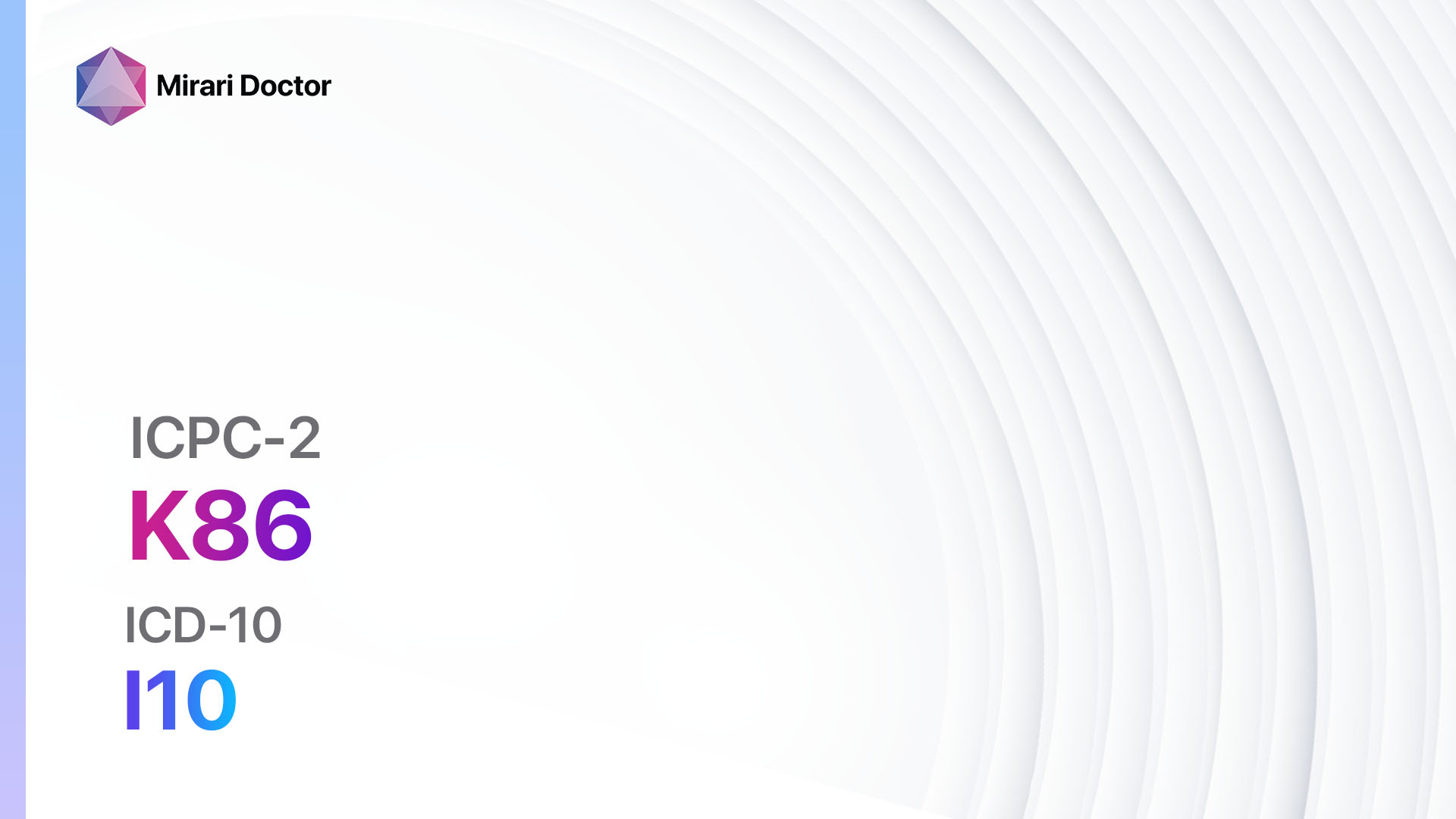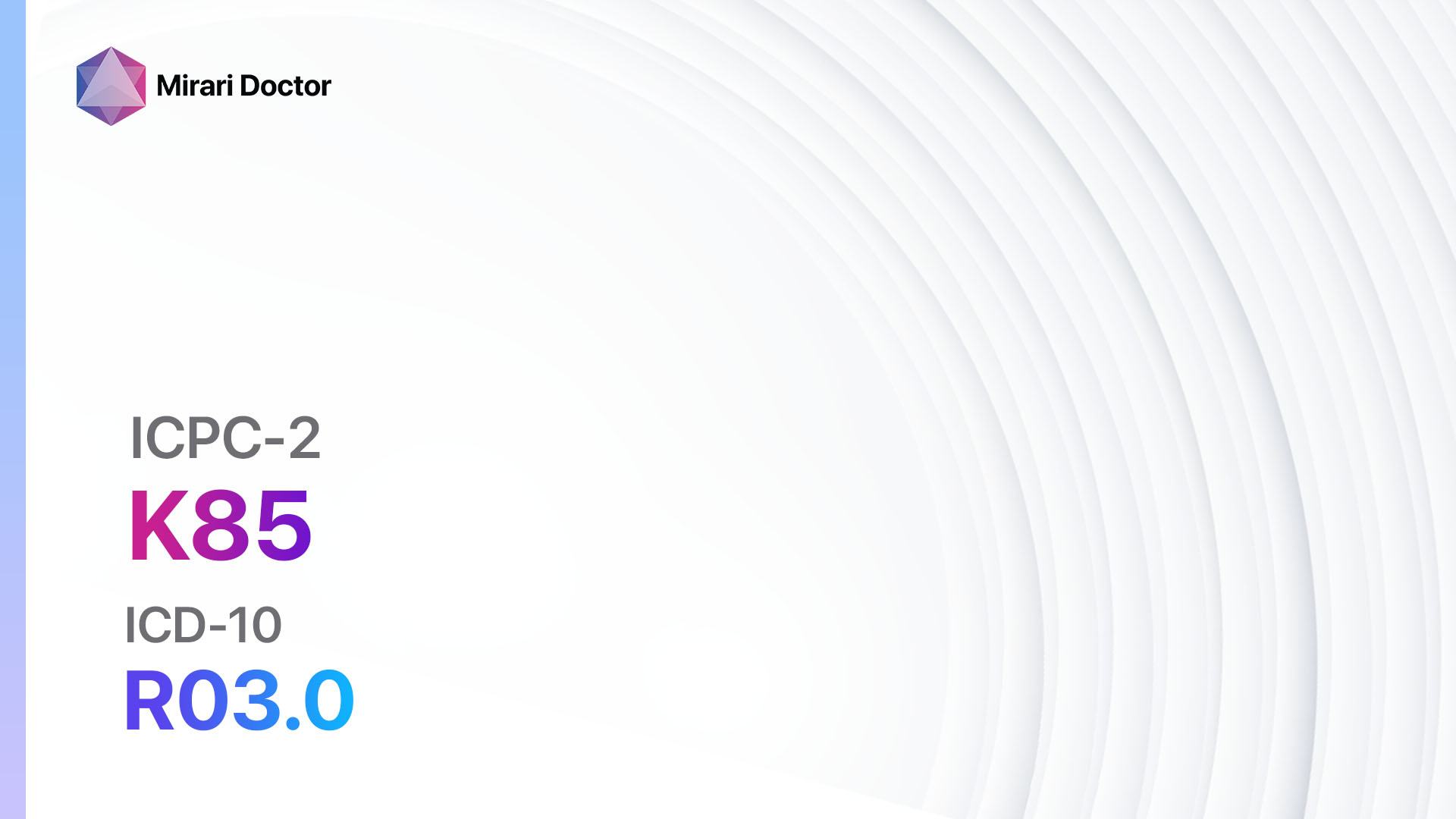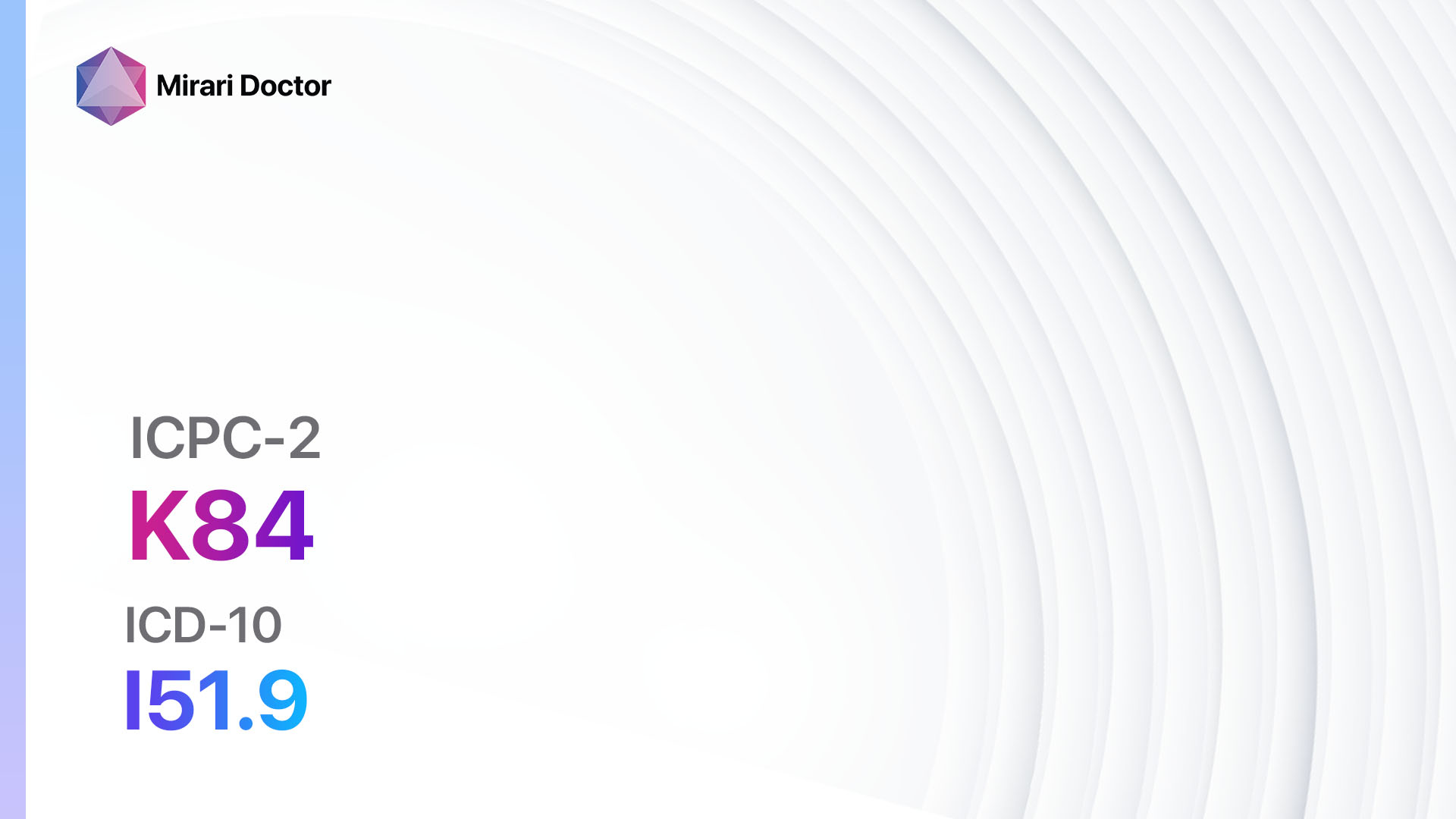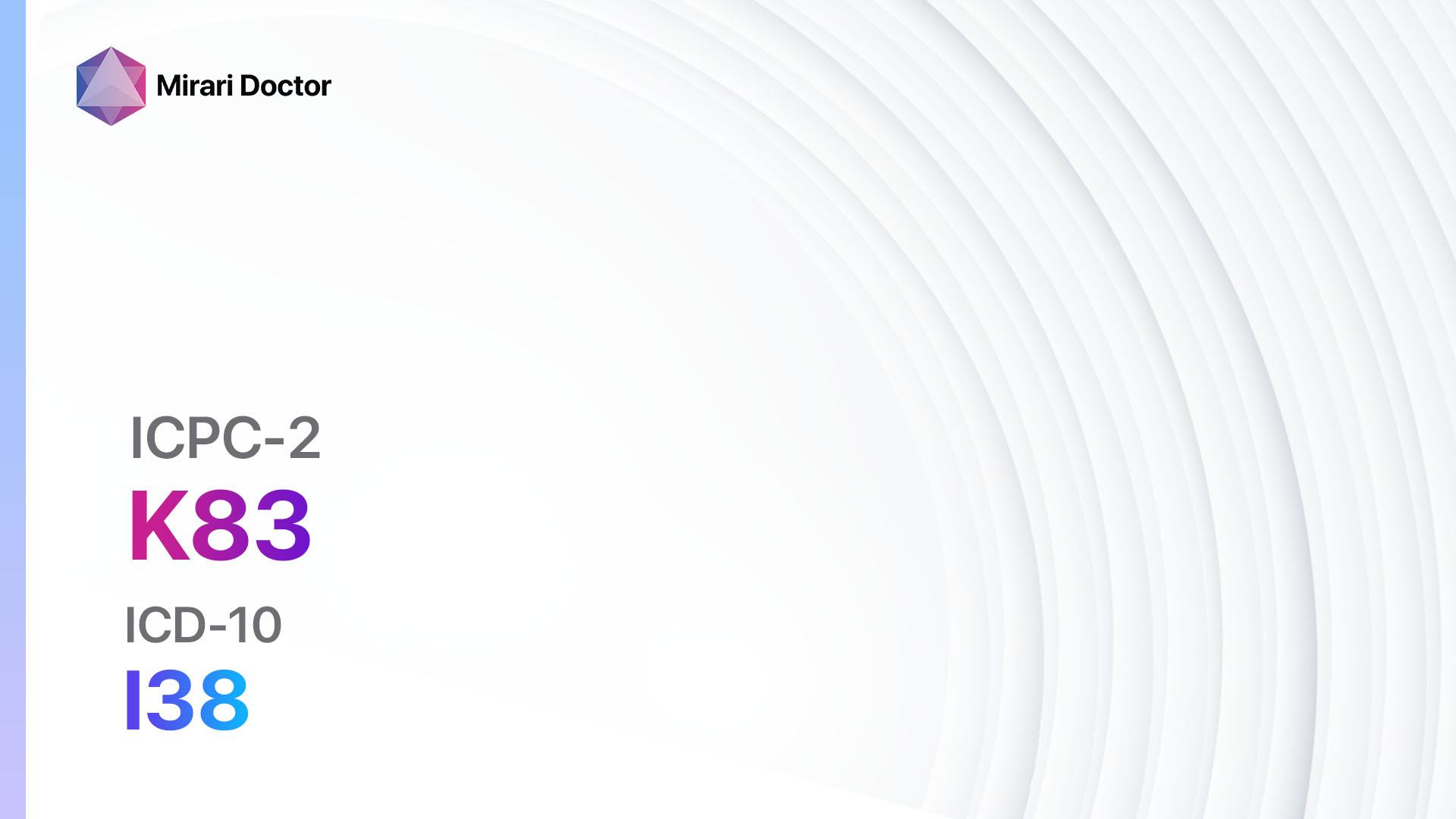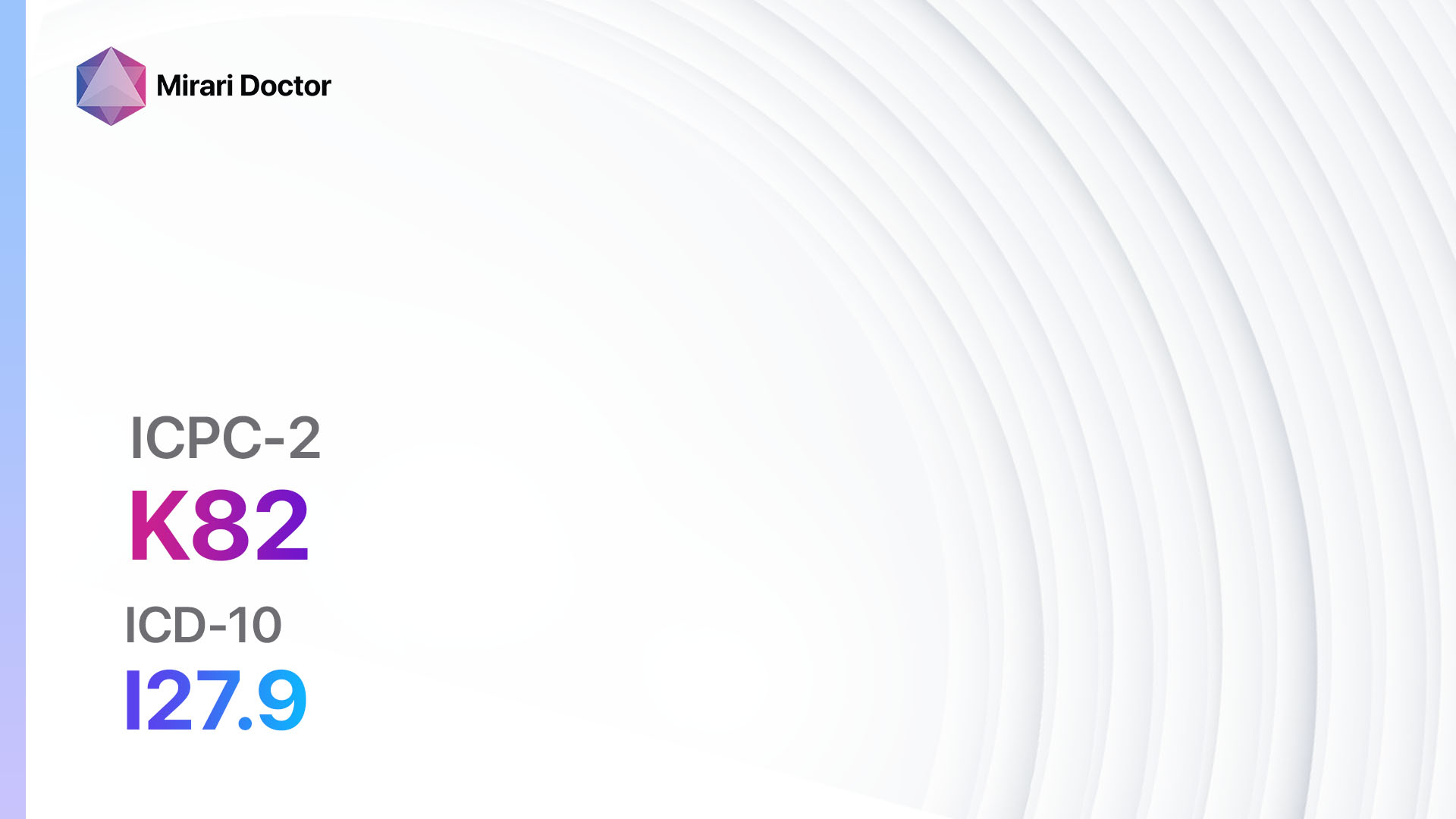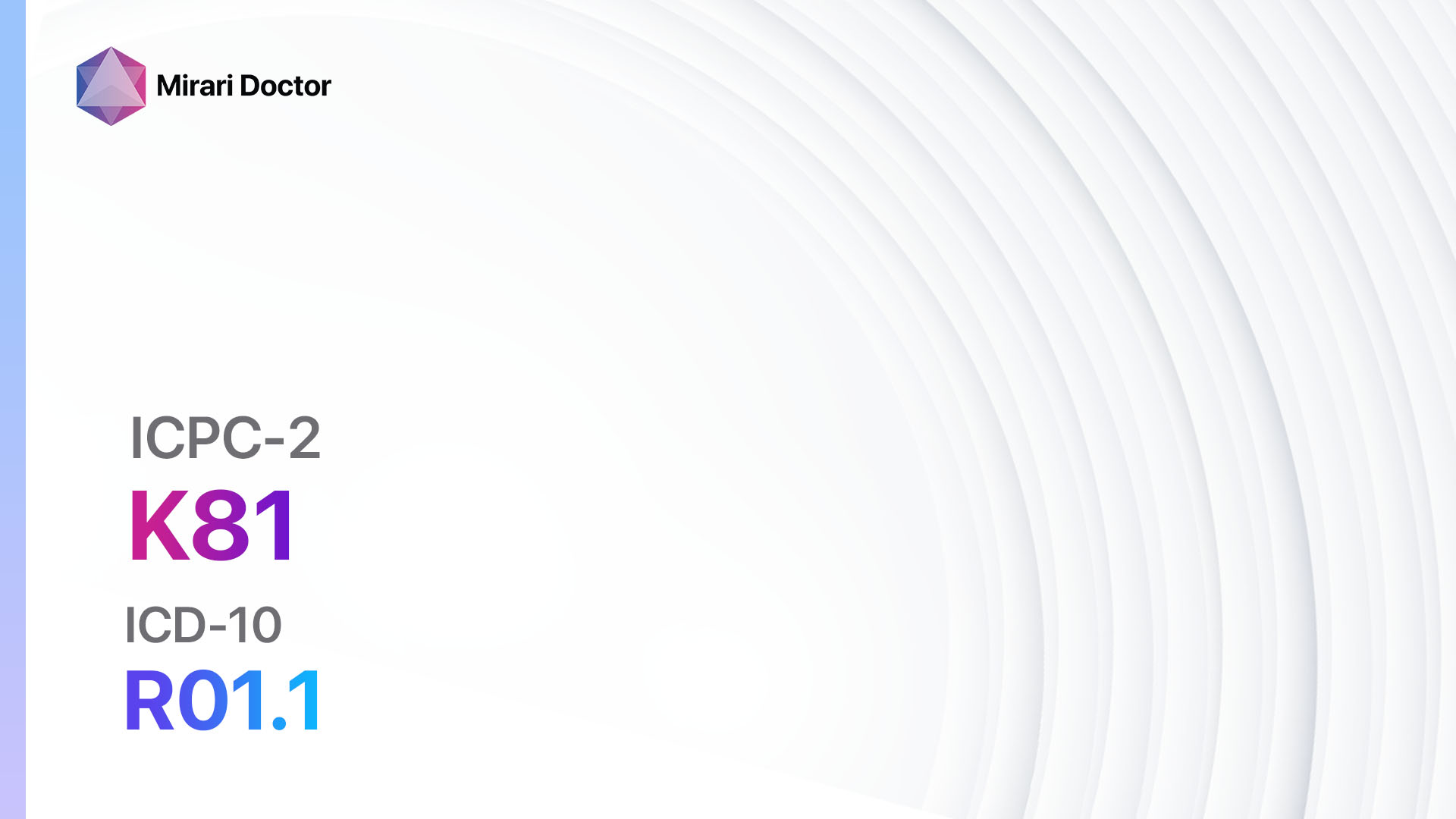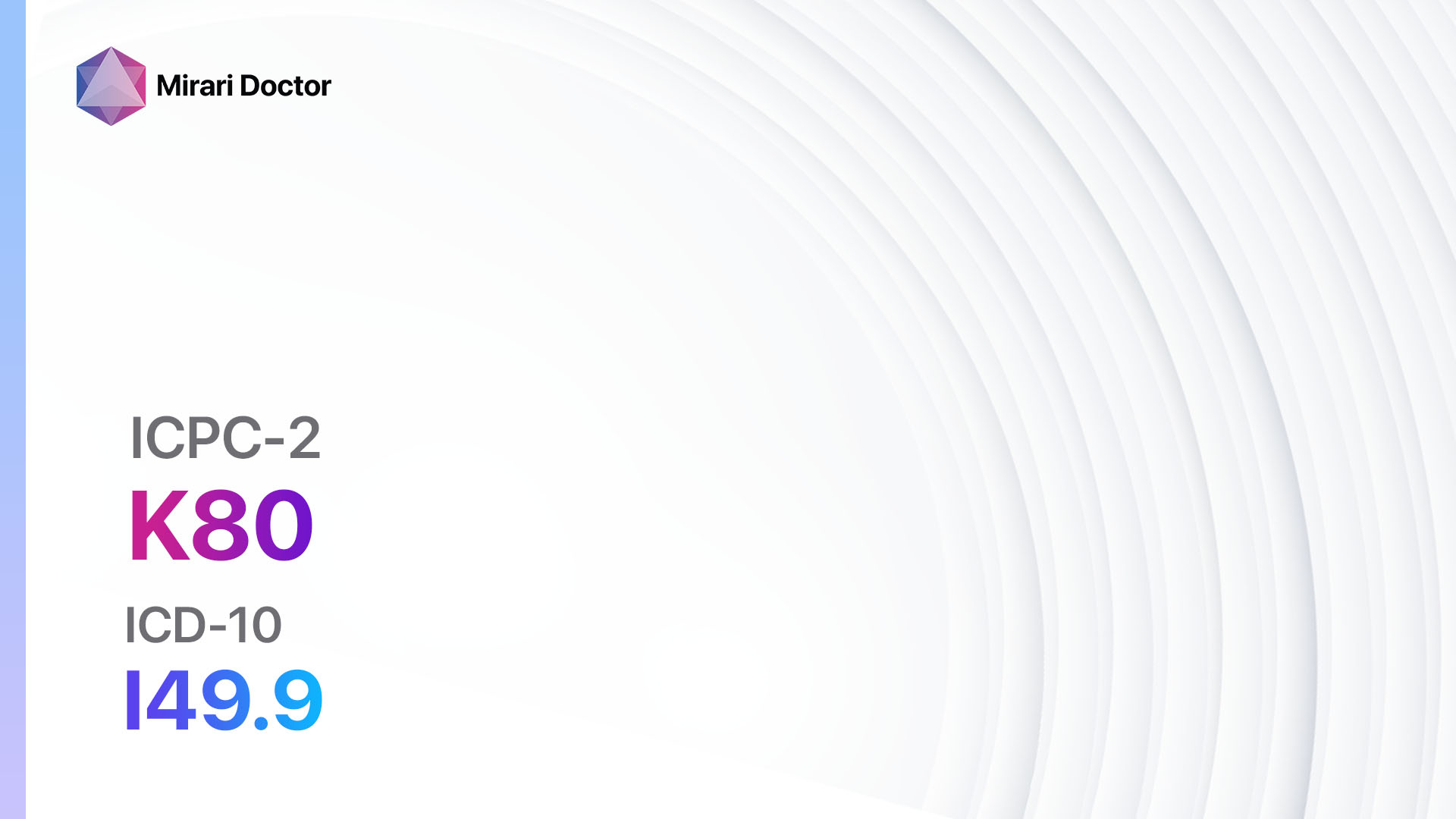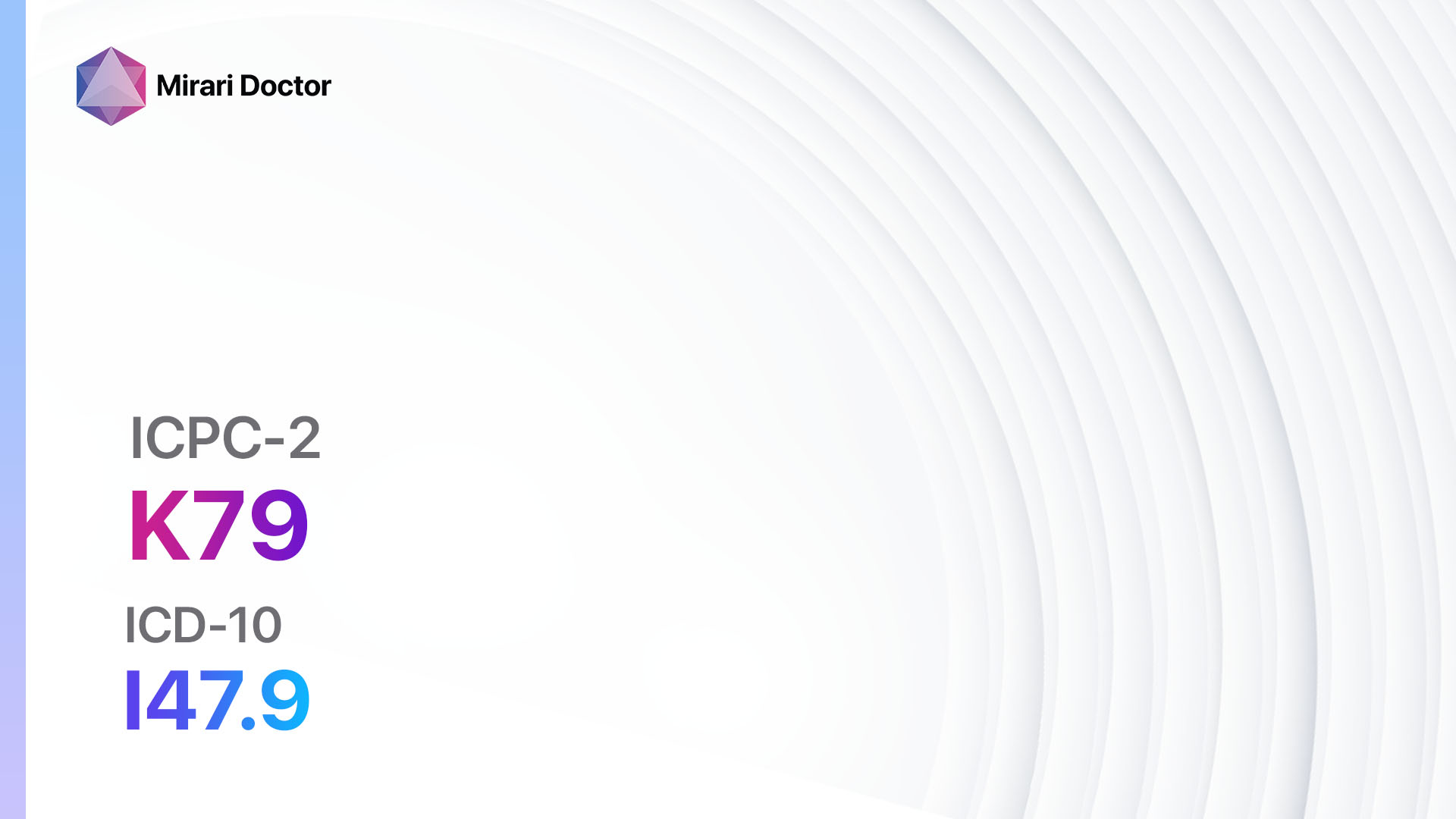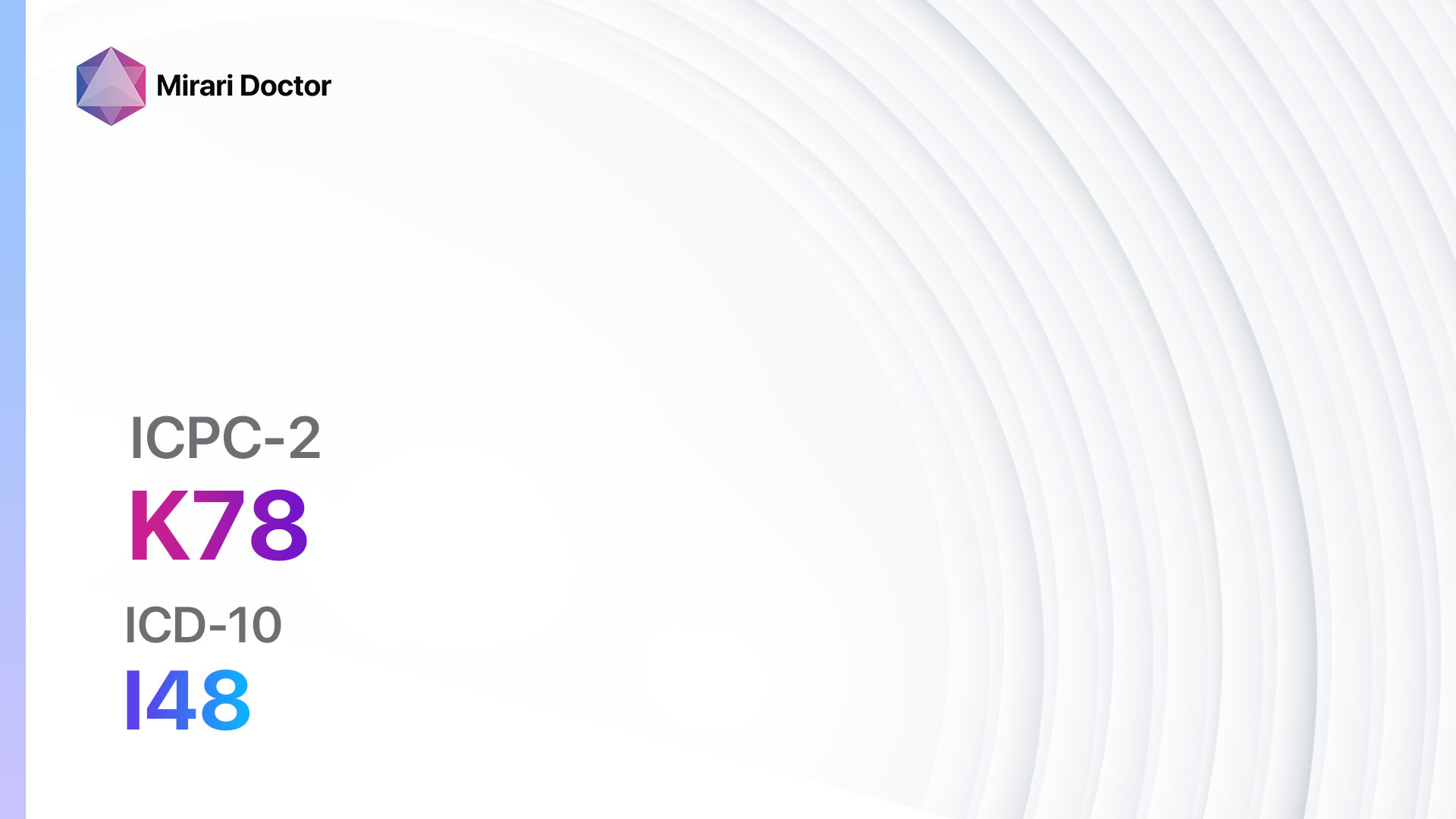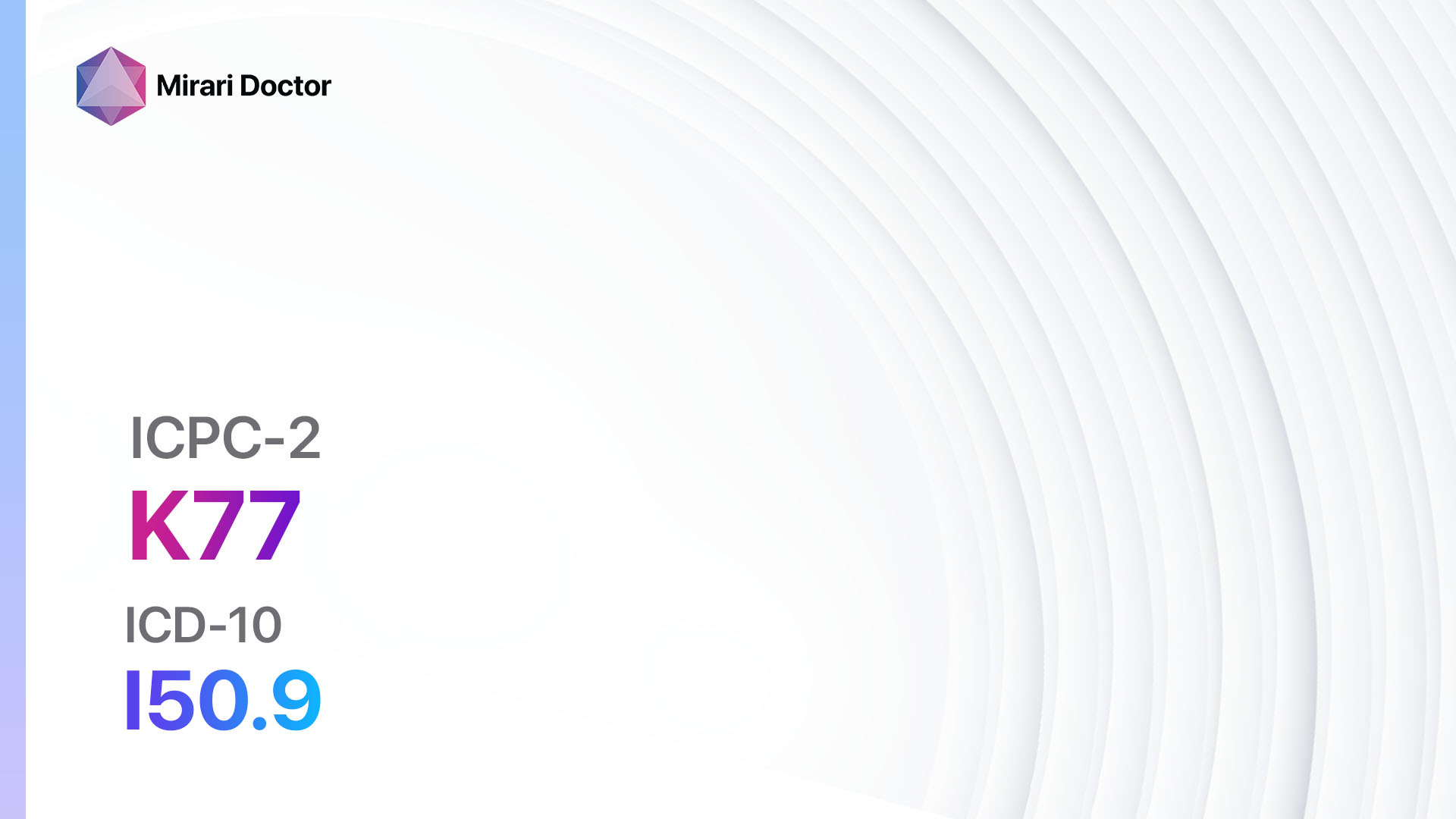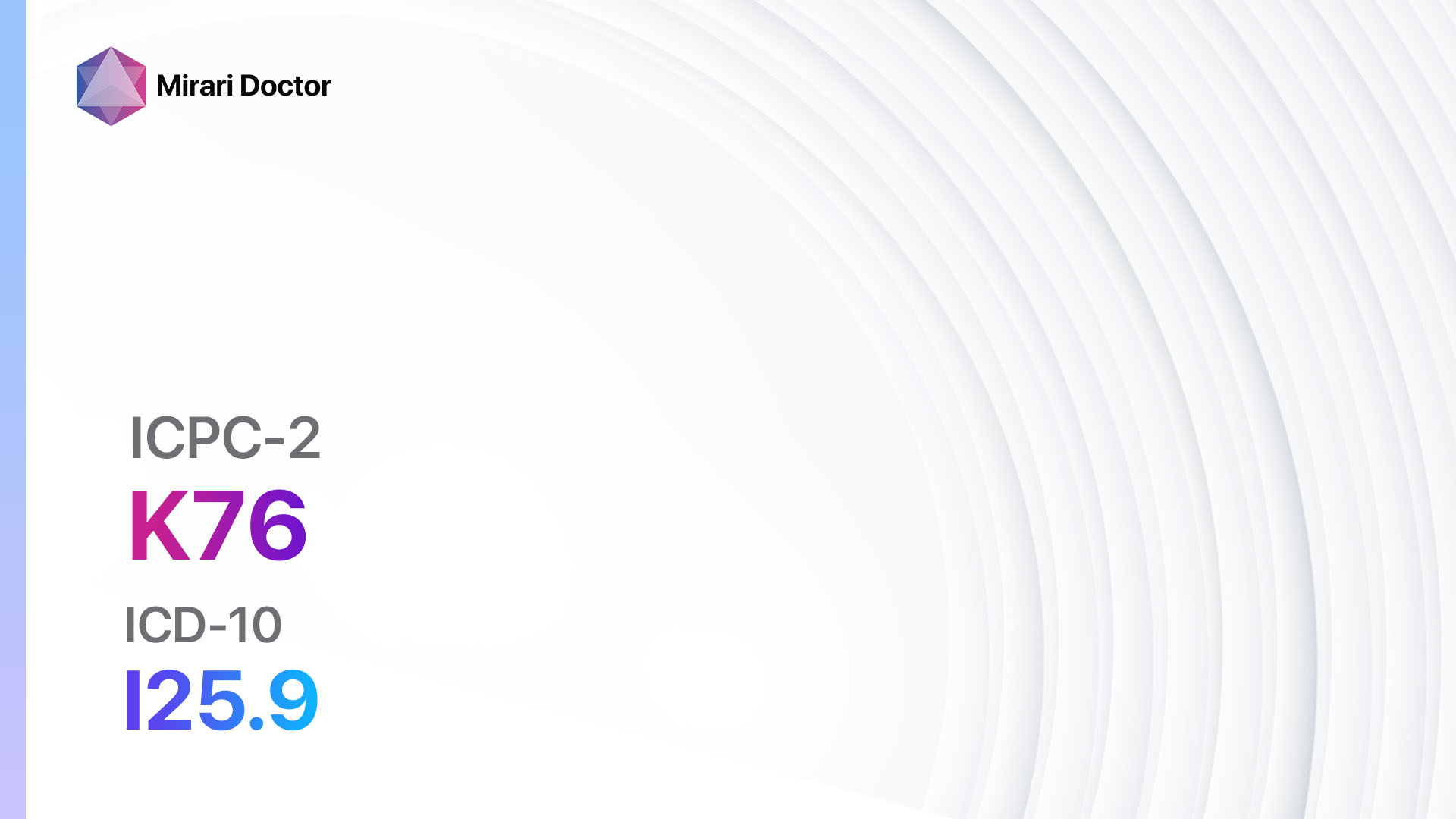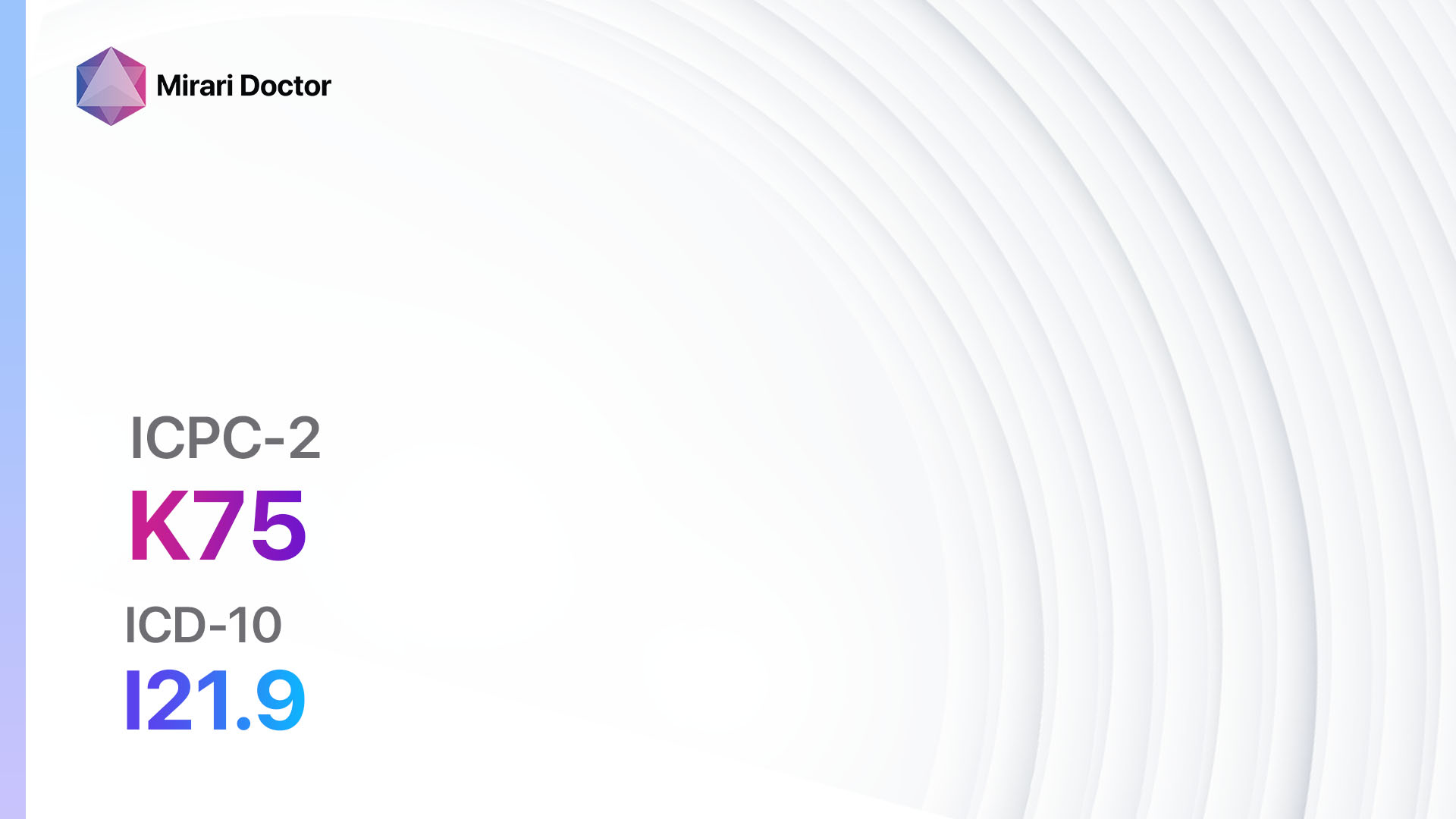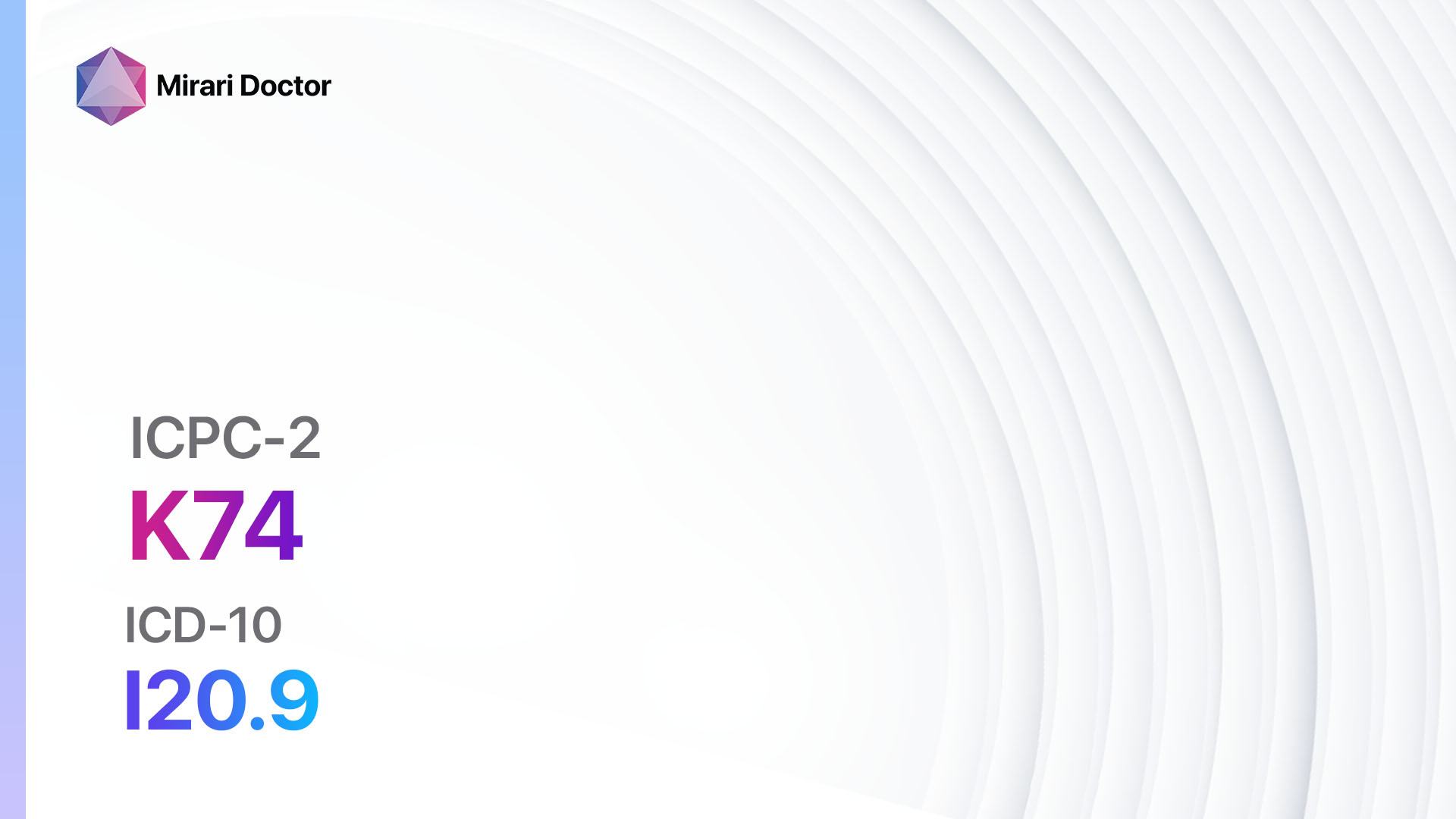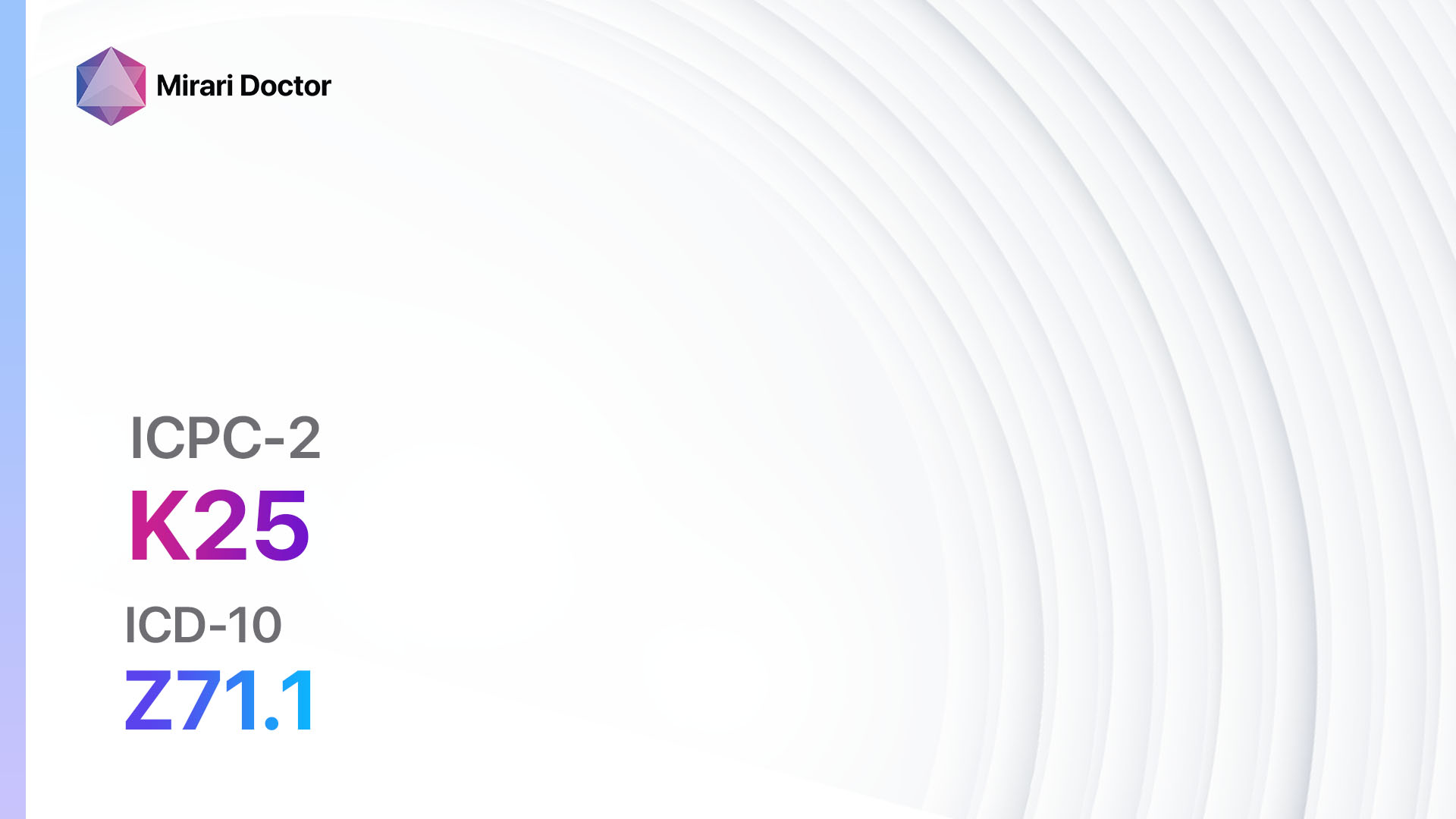
Introduction
Hypertension, also known as high blood pressure, is a common condition that affects millions of people worldwide[1]. It is a significant health concern as it can lead to serious complications such as heart disease, stroke, and kidney problems[2]. This guide aims to provide a comprehensive overview of fear of hypertension, including its symptoms, causes, diagnostic steps, possible interventions, and lifestyle modifications.
Codes
- ICPC-2 Code: K25 Fear of hypertension[3]
- ICD-10 Code: Z71.1 Person with feared complaint in whom no diagnosis is made[4]
Symptoms
- Increased heart rate: Patients may experience a rapid heartbeat or palpitations[5].
- Sweating: Excessive sweating, especially during periods of anxiety or stress[6].
- Shortness of breath: Difficulty breathing or feeling breathless[7].
- Dizziness: Feeling lightheaded or faint[8].
- Chest pain: Discomfort or pain in the chest area[9].
- Headaches: Frequent or severe headaches[10].
- Fatigue: Feeling tired or exhausted.
- Trembling: Uncontrollable shaking or trembling.
Causes
- Family history: Individuals with a family history of hypertension are at a higher risk.
- Age: The risk of developing hypertension increases with age.
- Obesity: Being overweight or obese can contribute to the development of hypertension.
- Sedentary lifestyle: Lack of physical activity can lead to hypertension.
- Unhealthy diet: Consuming a diet high in sodium, saturated fats, and cholesterol can increase the risk.
- Stress: Chronic stress can contribute to the development of hypertension.
- Smoking: Smoking damages blood vessels and increases blood pressure.
Diagnostic Steps
Medical History
- Gather information about the patient’s family history of hypertension.
- Ask about any previous diagnoses of hypertension or related conditions.
- Inquire about lifestyle factors such as diet, exercise, and stress levels.
- Assess the patient’s current medications and any potential drug interactions.
Physical Examination
- Measure the patient’s blood pressure using a sphygmomanometer.
- Check for signs of organ damage, such as enlarged heart or kidney problems.
- Assess the patient’s overall cardiovascular health, including heart rate and rhythm.
Laboratory Tests
- Complete blood count (CBC): To check for any abnormalities or underlying conditions.
- Lipid profile: To assess cholesterol levels and evaluate cardiovascular risk.
- Renal function tests: To evaluate kidney function and detect any related complications.
- Fasting blood glucose: To screen for diabetes, which is a risk factor for hypertension.
- Urinalysis: To check for protein or blood in the urine, which may indicate kidney damage.
Diagnostic Imaging
- Electrocardiogram (ECG): To evaluate the electrical activity of the heart and detect any abnormalities.
- Echocardiogram: To assess the structure and function of the heart.
- Chest X-ray: To check for signs of heart or lung abnormalities.
- Carotid ultrasound: To evaluate the blood flow in the carotid arteries and detect any blockages.
- Abdominal ultrasound: To assess the kidneys and detect any abnormalities.
Other Tests
- Ambulatory blood pressure monitoring: To measure blood pressure over a 24-hour period.
- Stress test: To evaluate the heart’s response to physical activity and detect any abnormalities.
- Genetic testing: To identify any genetic mutations associated with hypertension.
Follow-up and Patient Education
- Schedule regular follow-up appointments to monitor blood pressure and assess the effectiveness of interventions.
- Provide education on lifestyle modifications, including diet, exercise, stress management, and smoking cessation.
- Discuss the importance of medication adherence and potential side effects.
- Address any concerns or fears the patient may have about hypertension and its complications.
Possible Interventions
Traditional Interventions
Medications:
Top 5 drugs for hypertension:
- Angiotensin-converting enzyme (ACE) inhibitors (e.g., Lisinopril, Enalapril):
- Cost: Generic versions can be $10-$50/month.
- Contraindications: History of angioedema with ACE inhibitors, renal artery stenosis.
- Side effects: Dry cough, dizziness, low blood pressure.
- Severe side effects: Angioedema, hyperkalemia.
- Drug interactions: Nonsteroidal anti-inflammatory drugs (NSAIDs), potassium supplements.
- Warning: Monitoring of renal function and potassium levels is required.
- Angiotensin II receptor blockers (ARBs) (e.g., Losartan, Valsartan):
- Cost: Generic versions can be $10-$50/month.
- Contraindications: Pregnancy, severe renal impairment.
- Side effects: Dizziness, headache, fatigue.
- Severe side effects: Angioedema, hyperkalemia.
- Drug interactions: NSAIDs, potassium supplements.
- Warning: Regular blood pressure monitoring is required.
- Calcium channel blockers (e.g., Amlodipine, Nifedipine):
- Cost: Generic versions can be $10-$50/month.
- Contraindications: Severe hypotension, heart failure.
- Side effects: Swelling of the ankles, dizziness, flushing.
- Severe side effects: Heart rhythm disturbances, low blood pressure.
- Drug interactions: Grapefruit juice, beta-blockers.
- Warning: Regular blood pressure monitoring is required.
- Diuretics (e.g., Hydrochlorothiazide, Furosemide):
- Cost: Generic versions can be $3-$20/month.
- Contraindications: Severe renal impairment, anuria.
- Side effects: Increased urination, electrolyte imbalances.
- Severe side effects: Dehydration, low blood pressure.
- Drug interactions: Nonsteroidal anti-inflammatory drugs (NSAIDs), lithium.
- Warning: Regular monitoring of electrolytes and renal function is required.
- Beta-blockers (e.g., Atenolol, Metoprolol):
- Cost: Generic versions can be $10-$30/month.
- Contraindications: Severe bradycardia, heart block.
- Side effects: Fatigue, dizziness, cold hands and feet.
- Severe side effects: Bronchospasm, heart failure.
- Drug interactions: Calcium channel blockers, insulin.
- Warning: Should not be abruptly stopped.
Alternative Drugs:
- Alpha-blockers (e.g., Prazosin): Can be used in combination with other antihypertensive medications.
- Direct renin inhibitors (e.g., Aliskiren): Inhibits the renin-angiotensin-aldosterone system.
- Central alpha-2 agonists (e.g., Clonidine): Reduces sympathetic outflow from the central nervous system.
- Vasodilators (e.g., Hydralazine): Directly relaxes the smooth muscles of blood vessels.
- Combination medications: Various combinations of antihypertensive drugs may be prescribed.
Surgical Procedures:
- Renal denervation: A minimally invasive procedure that disrupts the nerves in the kidneys to lower blood pressure. Cost: $10,000 to $20,000.
- Bariatric surgery: Weight loss surgery that can help reduce blood pressure in obese individuals. Cost: $20,000 to $35,000.
- Carotid endarterectomy: Surgical removal of plaque from the carotid arteries to improve blood flow. Cost: $15,000 to $30,000.
- Aortic aneurysm repair: Surgical repair of an enlarged aorta to prevent rupture. Cost: $30,000 to $50,000.
- Coronary artery bypass surgery (CABG): Redirects blood around blocked or narrowed coronary arteries. Cost: $70,000 to $200,000.
Alternative Interventions
- Acupuncture: May help reduce blood pressure and promote relaxation. Cost: $60-$120 per session.
- Yoga and meditation: Can help reduce stress and promote overall well-being. Cost: Varies depending on the class or instructor.
- Dietary supplements: Certain supplements, such as omega-3 fatty acids and coenzyme Q10, may have potential benefits for hypertension. Cost: Varies depending on the specific supplement.
- Biofeedback: Teaches individuals to control their body’s response to stress and reduce blood pressure. Cost: $50-$100 per session.
- Mindfulness-based stress reduction: A program that combines meditation, yoga, and body awareness to reduce stress and improve overall health. Cost: Varies depending on the program or instructor.
Lifestyle Interventions
- Dietary modifications: Encourage a diet rich in fruits, vegetables, whole grains, and lean proteins. Limit sodium, saturated fats, and cholesterol intake.
- Regular exercise: Aim for at least 150 minutes of moderate-intensity aerobic activity or 75 minutes of vigorous-intensity activity per week.
- Weight management: Maintain a healthy weight through a combination of diet and exercise.
- Stress management: Practice relaxation techniques, such as deep breathing, meditation, or yoga.
- Smoking cessation: Encourage patients to quit smoking and provide resources for smoking cessation programs.
It is important to note that the cost ranges provided are approximate and may vary depending on the location and availability of the interventions. Patients should consult with their healthcare provider to determine the most suitable interventions for their specific condition.
Mirari Cold Plasma Alternative Intervention
Understanding Mirari Cold Plasma
- Safe and Non-Invasive Treatment: Mirari Cold Plasma is a safe and non-invasive treatment option for various skin conditions. It does not require incisions, minimizing the risk of scarring, bleeding, or tissue damage.
- Efficient Extraction of Foreign Bodies: Mirari Cold Plasma facilitates the removal of foreign bodies from the skin by degrading and dissociating organic matter, allowing easier access and extraction.
- Pain Reduction and Comfort: Mirari Cold Plasma has a local analgesic effect, providing pain relief during the treatment, making it more comfortable for the patient.
- Reduced Risk of Infection: Mirari Cold Plasma has antimicrobial properties, effectively killing bacteria and reducing the risk of infection.
- Accelerated Healing and Minimal Scarring: Mirari Cold Plasma stimulates wound healing and tissue regeneration, reducing healing time and minimizing the formation of scars.
Mirari Cold Plasma Prescription
Video instructions for using Mirari Cold Plasma Device – K25 Fear of hypertension (ICD-10:Z71.1)
| Mild | Moderate | Severe |
| Mode setting: 1 (Infection) Location: 5 (Lungs) Morning: 15 minutes, Evening: 15 minutes |
Mode setting: 1 (Infection) Location: 5 (Lungs) Morning: 30 minutes, Lunch: 30 minutes, Evening: 30 minutes |
Mode setting: 1 (Infection) Location: 5 (Lungs) Morning: 30 minutes, Lunch: 30 minutes, Evening: 30 minutes |
| Mode setting: 2 (Wound Healing) Location: 5 (Lungs) Morning: 15 minutes, Evening: 15 minutes |
Mode setting: 2 (Wound Healing) Location: 5 (Lungs) Morning: 30 minutes, Lunch: 30 minutes, Evening: 30 minutes |
Mode setting: 2 (Wound Healing) Location: 5 (Lungs) Morning: 30 minutes, Lunch: 30 minutes, Evening: 30 minutes |
| Mode setting: 7 (Immunotherapy) Location: 1 (Sacrum) Morning: 15 minutes, Evening: 15 minutes |
Mode setting: 7 (Immunotherapy) Location: 1 (Sacrum) Morning: 30 minutes, Lunch: 30 minutes, Evening: 30 minutes |
Mode setting: 7 (Immunotherapy) Location: 1 (Sacrum) Morning: 30 minutes, Lunch: 30 minutes, Evening: 30 minutes |
| Mode setting: 7 (Immunotherapy) Location: 4 (Heart, Bile & Pancreas) Morning: 15 minutes, Evening: 15 minutes |
Mode setting: 7 (Immunotherapy) Location: 4 (Heart, Bile & Pancreas) Morning: 30 minutes, Lunch: 30 minutes, Evening: 30 minutes |
Mode setting:7 (Immunotherapy) Location: 4 (Heart, Bile & Pancreas) Morning: 30 minutes, Lunch: 30 minutes, Evening: 30 minutes |
| Total Morning: 60 minutes approx. $10 USD, Evening: 60 minutes approx. $10 USD |
Total Morning: 120 minutes approx. $20 USD, Lunch: 120 minutes approx. $20 USD, Evening: 120 minutes approx. $20 USD, |
Total Morning: 120 minutes approx. $20 USD, Lunch: 120 minutes approx. $20 USD, Evening: 120 minutes approx. $20 USD, |
| Usual treatment for 7-60 days approx. $140 USD – $1200 USD | Usual treatment for 6-8 weeks approx. $2,520 USD – $3,360 USD |
Usual treatment for 3-6 months approx. $5,400 USD – $10,800 USD
|
 |
|
Use the Mirari Cold Plasma device to treat Fear of hypertension effectively.
WARNING: MIRARI COLD PLASMA IS DESIGNED FOR THE HUMAN BODY WITHOUT ANY ARTIFICIAL OR THIRD PARTY PRODUCTS. USE OF OTHER PRODUCTS IN COMBINATION WITH MIRARI COLD PLASMA MAY CAUSE UNPREDICTABLE EFFECTS, HARM OR INJURY. PLEASE CONSULT A MEDICAL PROFESSIONAL BEFORE COMBINING ANY OTHER PRODUCTS WITH USE OF MIRARI.
Step 1: Cleanse the Skin
- Start by cleaning the affected area of the skin with a gentle cleanser or mild soap and water. Gently pat the area dry with a clean towel.
Step 2: Prepare the Mirari Cold Plasma device
- Ensure that the Mirari Cold Plasma device is fully charged or has fresh batteries as per the manufacturer’s instructions. Make sure the device is clean and in good working condition.
- Switch on the Mirari device using the power button or by following the specific instructions provided with the device.
- Some Mirari devices may have adjustable settings for intensity or treatment duration. Follow the manufacturer’s instructions to select the appropriate settings based on your needs and the recommended guidelines.
Step 3: Apply the Device
- Place the Mirari device in direct contact with the affected area of the skin. Gently glide or hold the device over the skin surface, ensuring even coverage of the area experiencing.
- Slowly move the Mirari device in a circular motion or follow a specific pattern as indicated in the user manual. This helps ensure thorough treatment coverage.
Step 4: Monitor and Assess:
- Keep track of your progress and evaluate the effectiveness of the Mirari device in managing your Fear of hypertension. If you have any concerns or notice any adverse reactions, consult with your health care professional.
Note
This guide is for informational purposes only and should not replace the advice of a medical professional. Always consult with your healthcare provider or a qualified medical professional for personal advice, diagnosis, or treatment. Do not solely rely on the information presented here for decisions about your health. Use of this information is at your own risk. The authors of this guide, nor any associated entities or platforms, are not responsible for any potential adverse effects or outcomes based on the content.
Mirari Cold Plasma System Disclaimer
- Purpose: The Mirari Cold Plasma System is a Class 2 medical device designed for use by trained healthcare professionals. It is registered for use in Thailand and Vietnam. It is not intended for use outside of these locations.
- Informational Use: The content and information provided with the device are for educational and informational purposes only. They are not a substitute for professional medical advice or care.
- Variable Outcomes: While the device is approved for specific uses, individual outcomes can differ. We do not assert or guarantee specific medical outcomes.
- Consultation: Prior to utilizing the device or making decisions based on its content, it is essential to consult with a Certified Mirari Tele-Therapist and your medical healthcare provider regarding specific protocols.
- Liability: By using this device, users are acknowledging and accepting all potential risks. Neither the manufacturer nor the distributor will be held accountable for any adverse reactions, injuries, or damages stemming from its use.
- Geographical Availability: This device has received approval for designated purposes by the Thai and Vietnam FDA. As of now, outside of Thailand and Vietnam, the Mirari Cold Plasma System is not available for purchase or use.
References
- World Health Organization. (2021). Hypertension. https://www.who.int/news-room/fact-sheets/detail/hypertension
- Centers for Disease Control and Prevention. (2021). High Blood Pressure Symptoms and Causes. https://www.cdc.gov/bloodpressure/about.htm
- World Organization of Family Doctors. (2005). ICPC-2-R: International Classification of Primary Care. Oxford University Press.
- World Health Organization. (2019). International Statistical Classification of Diseases and Related Health Problems (11th ed.). https://icd.who.int/
- American Heart Association. (2021). What are the Symptoms of High Blood Pressure? https://www.heart.org/en/health-topics/high-blood-pressure/why-high-blood-pressure-is-a-silent-killer/what-are-the-symptoms-of-high-blood-pressure
- Goldstein, C. M., Josephson, R., Xie, S., & Hughes, J. W. (2012). Current perspectives on the use of meditation to reduce blood pressure. International Journal of Hypertension, 2012, 578397. https://doi.org/10.1155/2012/578397
- Rimoldi, S. F., Scherrer, U., & Messerli, F. H. (2014). Secondary arterial hypertension: when, who, and how to screen?. European Heart Journal, 35(19), 1245-1254. https://doi.org/10.1093/eurheartj/eht534
- Messerli, F. H., Williams, B., & Ritz, E. (2007). Essential hypertension. The Lancet, 370(9587), 591-603. https://doi.org/10.1016/S0140-6736(07)61299-9
- Nadar, S. K., Tayebjee, M. H., Messerli, F., & Lip, G. Y. (2006). Target organ damage in hypertension: pathophysiology and implications for drug therapy. Current Pharmaceutical Design, 12(13), 1581-1592. https://doi.org/10.2174/138161206776843368
- Fuchs, F. D., & Whelton, P. K. (2020). High blood pressure and cardiovascular disease. Hypertension, 75(2), 285-292. https://doi.org/10.1161/HYPERTENSIONAHA.119.14240
Related articles
Made in USA


